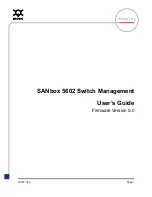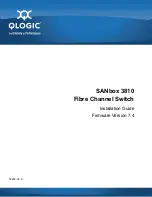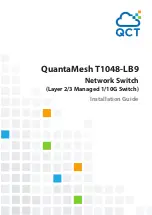
6-1
v1.0, June 2010
Chapter
6
OSPF
In this chapter, the following examples are provided:
•
“Configure an Inter-Area Router” on page
6-2
•
“Configure OSPF on a Border Router” on page
6-8
•
“Configure Area 1 as a Stub Area” on page
6-15
•
“Configure Area 1 as a nssa Area” on page
6-24
•
“VLAN Routing OSPF Configuration” on page
6-35
•
“OSPFv3 (Open Shortest Path First)” on page
6-40
For larger networks Open Shortest Path First (OSPF) is generally used in preference to RIP. OSPF offers
several benefits to the administrator of a large and/or complex network:
•
Less network traffic:
–
Routing table updates are sent only when a change has occurred
–
Only the part of the table which has changed is sent
–
Updates are sent to a multicast, not a broadcast, address
•
Hierarchical management, allowing the network to be subdivided
The top level of the hierarchy of an OSPF network is known as an autonomous system (AS) or routing
domain, and is a collection of networks with a common administration and routing strategy. The AS is
divided into areas: intra-area routing is used when a source and destination address are in the same area, and
inter-area routing across an OSPF backbone is used when they are not. An inter-area router communicates
with border routers in each of the areas to which it provides connectivity.
The 7000 Series Managed Switch operating as a router and running OSPF will determine the best route
using the assigned cost and the type of the OSPF route. The order for choosing a route if more than one type
of route exists is as follows:
•
Intra-area
•
Inter-area
•
External type 1: the route is external to the AS
•
External Type 2: the route was learned from other protocols such as RIP
















































